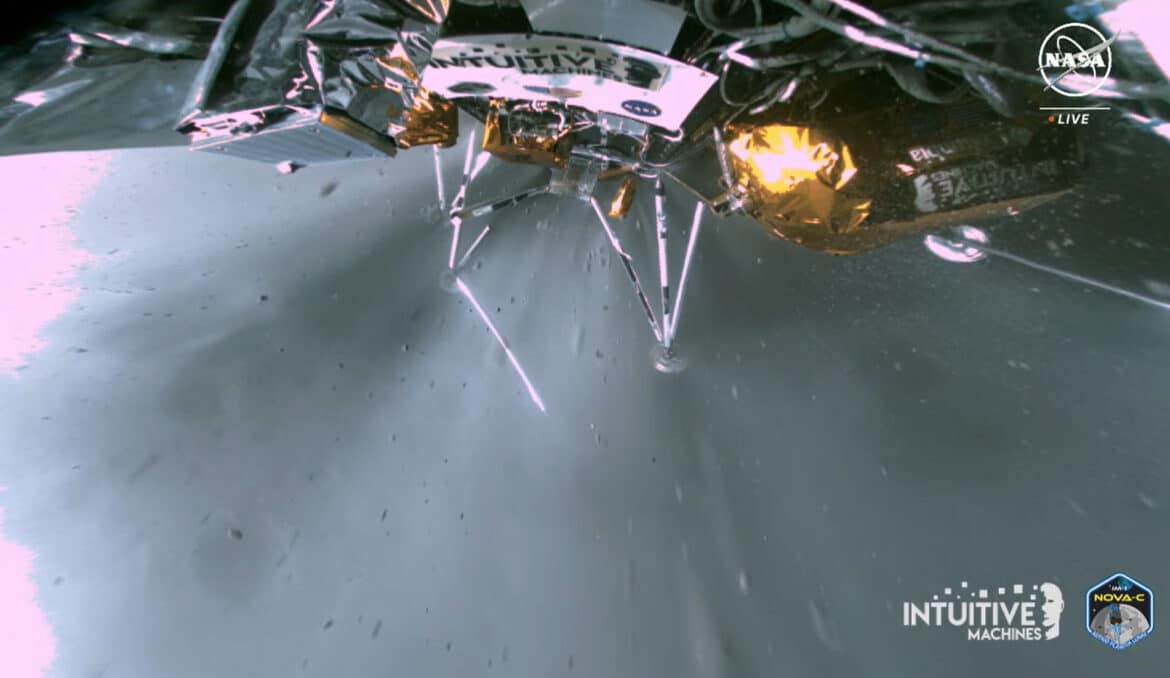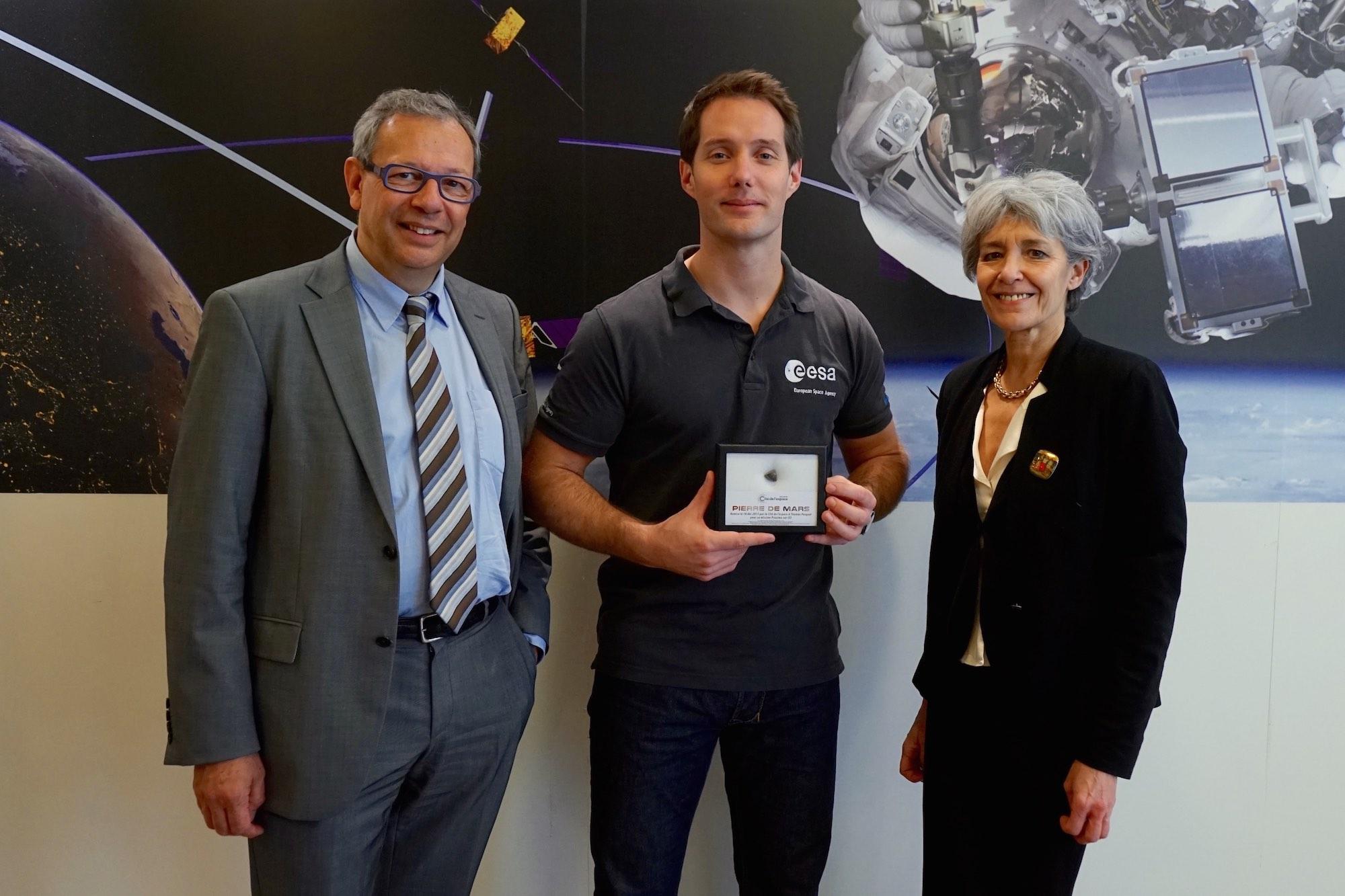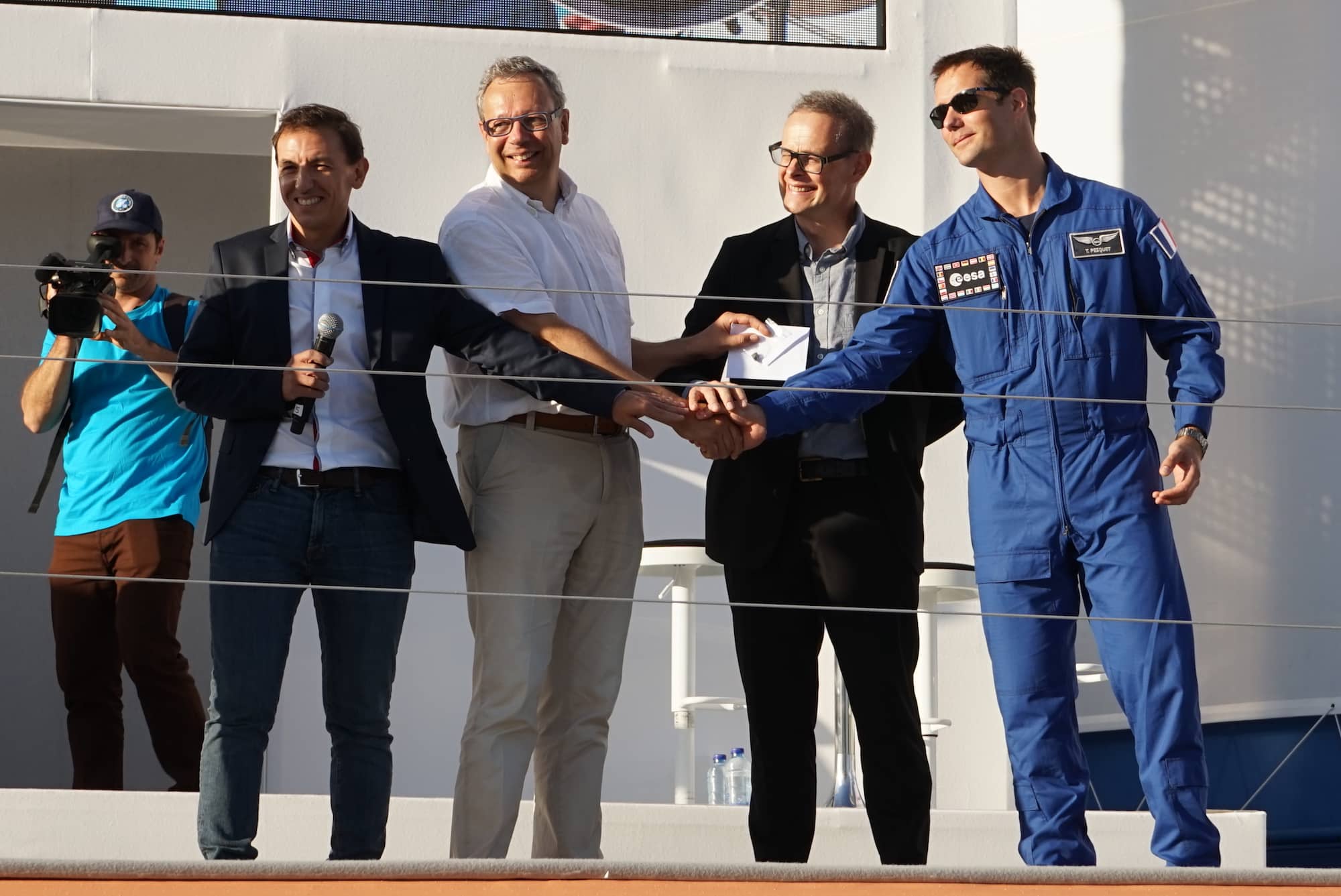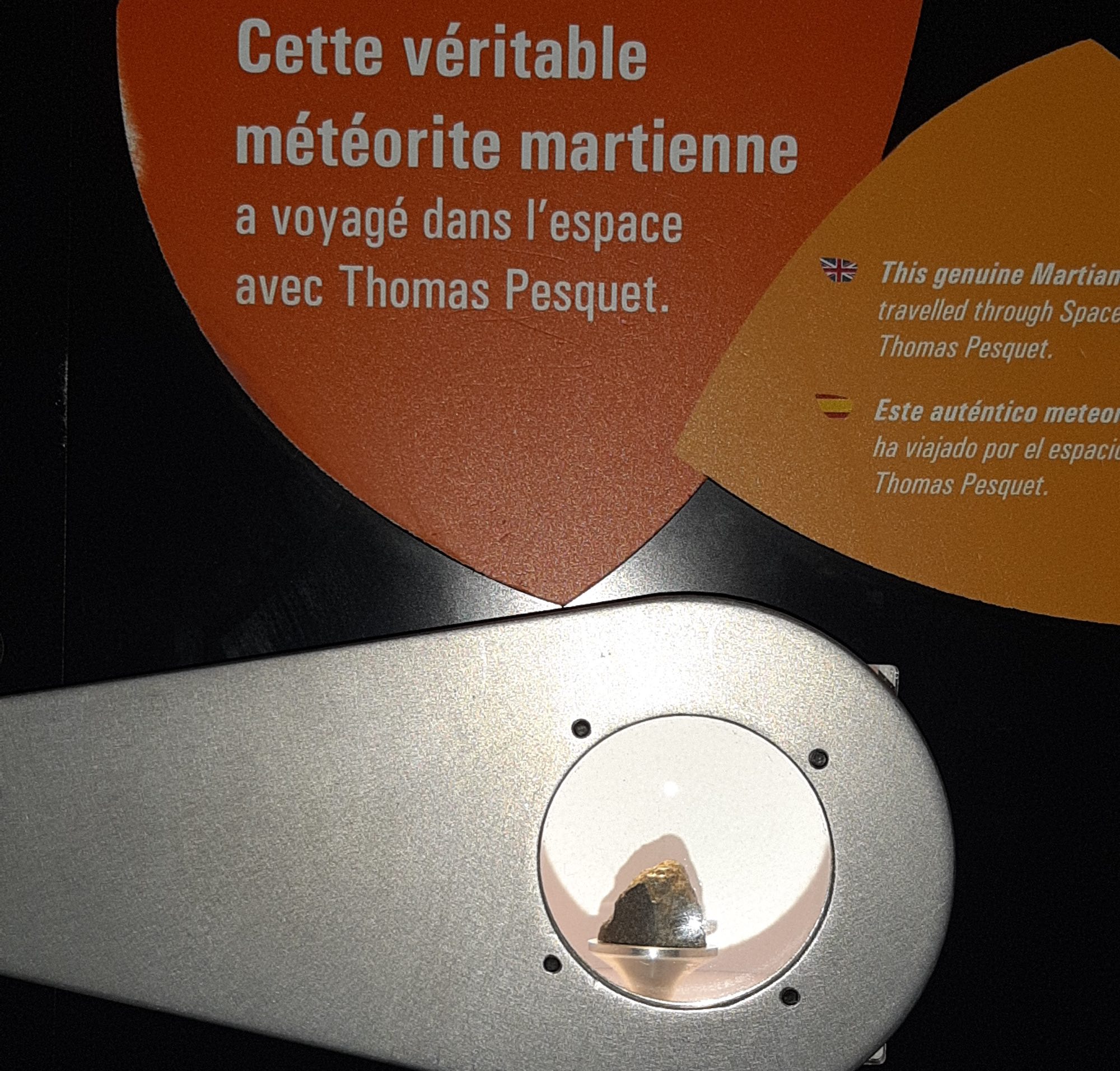
Share
Published on 13 October 2020
On Facebook, Thomas Pesquet reminded us that the Perseverance rover, which is travelling to Mars at the moment, is carrying a rock from that planet. The ESA astronaut knows the rock from the red planet well, since Cité de l'espace lent it to him for his Proxima mission.

Since its successful launch on 30 July, the Perseverance rover has been on a 480 million kilometre journey to reach the red planet. It will land there in the Jezero Crater on 18 February 2021. Equipped with instruments for detecting traces of past life and the SuperCam laser camera supplied by France through its CNES space agency, Perseverance also houses a fragment of rock which has had an incredible journey. First of all, it was ejected from its world by an impact millions of years ago, ending up as a meteorite on Earth. Here, scientists have demonstrated its provenance by analysing it. Then the little pebble went back into space for a few months with Thomas Pesquet during his first mission, Proxima, aboard the International Space Station (ISS), before returning to our planet, then setting off back to its origins.
Thomas Pesquet is currently training for his second mission, Alpha. In the spring, he has to take off for the ISS for around 6 months, aboard a SpaceX Crew Dragon capsule. As is his habit, the European Space Agency (ESA) astronaut is sharing his preparations and his passion for space exploration on social networks. On 6 October, in a post on his Facebook account, he mentioned this Mars rock which is returning to its planet (screenshot below).
What’s more, the tenth French person in space wrote: “Ask astrophysicist, Sylvestre Maurice, Cité de l’espace or CNES to tell you its story.” Of course, as Cité de l’espace, we will answer this call!
First of all, remember that this Mars rock was not brought back from the planet by a probe. No spacecraft has yet managed such a sample transport (it’s a long-term project in which NASA and ESA are both involved and Perseverance is the first stage). As explained at the beginning of the article, it was nature which took charge of the delivery, so to speak! What are known as Martian meteorites are pieces of Mars torn from their planet following an impact. After drifting through the Solar System, some end up entering our atmosphere, falling as “small rocks” on the Earth’s surface. Analysis of them shows their origins, particularly thanks to comparing the gases trapped inside them which are identical to those of the Martian atmosphere as measured by the probes sent there.
On 18 December 2015, Jean-Baptiste Desbois, Director General of Cité de l’espace, lent Thomas Pesquet such a Martian meteorite.
On the same day, after filming this video in the ESA premises in Paris, astronaut Claudie Haigneré joined Jean Baptiste Desbois and Thomas Pesquet to welcome this symbolic initiative.

From left to right: Director General of Cité de l’espace Jean Baptiste Desbois, ESA astronaut Thomas Pesquet, holding the Martian rock, and Claudie Haigneré, astronaut and sponsor of Cité de l’espace. Credit: Enjoy Space / Olivier Sanguy
In November 2016, Thomas Pesquet took off from Baikonour to the ISS, aboard Soyuz MS-03, along with Russian Oleg Novitsky and the American Peggy Whitson… not forgetting the rock from Mars! On board the station, the Frenchman recorded the video below. Thus, he stressed that space exploration, manned or robotic, is like “a big family working together for scientific knowledge.”
The Mars rock came back with Thomas Pesquet on 2 June 2017, after 196 days and 17 hours in orbit around Earth. Four days later at the European Astronaut Centre of the ESA, he confirmed to us during an interview that he had brought the rock back with him (at 2:41 in the video below).
On 15 October 2017, the tenth French person in space officially handed the rock back to Cité de l’espace, on the occasion of the celebration of the Toulouse scientific culture centre’s 20th birthday (photo below).

Thomas Pesquet (on the right) giving the Mars rock to Director General of Cité de l’espace, Jean Baptiste Desbois (in the white shirt) and, in the centre, astrophysicist, Sylvestre Maurice of IRAP (Institut de Recherche en Astronomie et Planétologie de Toulouse) [Institute of Research into Astronomy and Planetology, Toulouse]. Credit: Cité de l’espace/Olivier Sanguy
As planned, this Mars rock was returned to Cité de l’espace, which incorporated it into its exhibitions (photo below).

The Mars rock which accompanied Thomas Pesquet on his Proxima mission, as displayed at Cité de l’espace.
Credit: Cité de l’espace/Florence Seroussi
IRAP astrophysicist Sylvestre Maurice has since taken a piece of the rock to use as a calibration target for the SuperCam laser instrument on NASA’s Perseverance rover, as the diagram below shows.
On 30 July 2020, the Perseverance rover of the Mars 2020 mission left Florida on top of an Atlas V launcher of the United Launch Alliance. The video below shows the take-off. Under the nose-cone, then, there is the rover … and the fragment of Mars rock.
When Perseverance lands on Mars on 18 February 2021 after a journey of 480 million kilometres and 7 months, this fragment will have accomplished a Mars-Earth journey, then an orbital mission aboard the ISS and finally a return to its planet. A journey as extraordinary as it is original, symbolising our determination to explore.
Title image credit: NASA/ESA/JPL/Sylvestre Maurice